Fun Kandinsky Concentric Circles Art Lesson For Kids
This straight forward painting project teaches children how to combine color theory and the elements of art to create their own beautiful unique art piece. Not to mention it is the perfect way to teach a little Art history at the same time. These Kandinsky circles are a proven winner every time!

Why You Will Love This Art Idea
Supplies You’ll Need
Disclosure: This post may contain affiliate links when clicked, we may earn a small commission at no additional cost to you. Read our full privacy policy.
*If using watercolor paint, we recommend watercolor paper for the best results. However, this project works fine on heavier cardstock or drawing paper.

Who is Wassily Kandinsky?
Artist Wassily Kandinsky is known for combining art and music to create abstract art to express emotions. According to Britannica, he was a Russian painter known as a pioneer of abstract art.
His artwork is a great class lesson to discuss the elements of art
Resources
Here are a few of Kandinsky’s most recognizable works.
Interesting fact: Wassily can also be spelled Vasily. When you click on the links above, you can see that MoMA and The Guggenheim Museum will say “Vasily”.
Great Video For Kids
In this Art with Mati and Dada, they show how the visual arts & music can complement each other.
Before You Begin
If you are completing this project with 1st grade or younger, we think drawing the 6 boxes on the page with a pencil is a good idea.
To mass produce this you can make a template by cutting your project paper in 1/3s and another strip in 1/2. This way you can get these grid lines on the paper quickly.
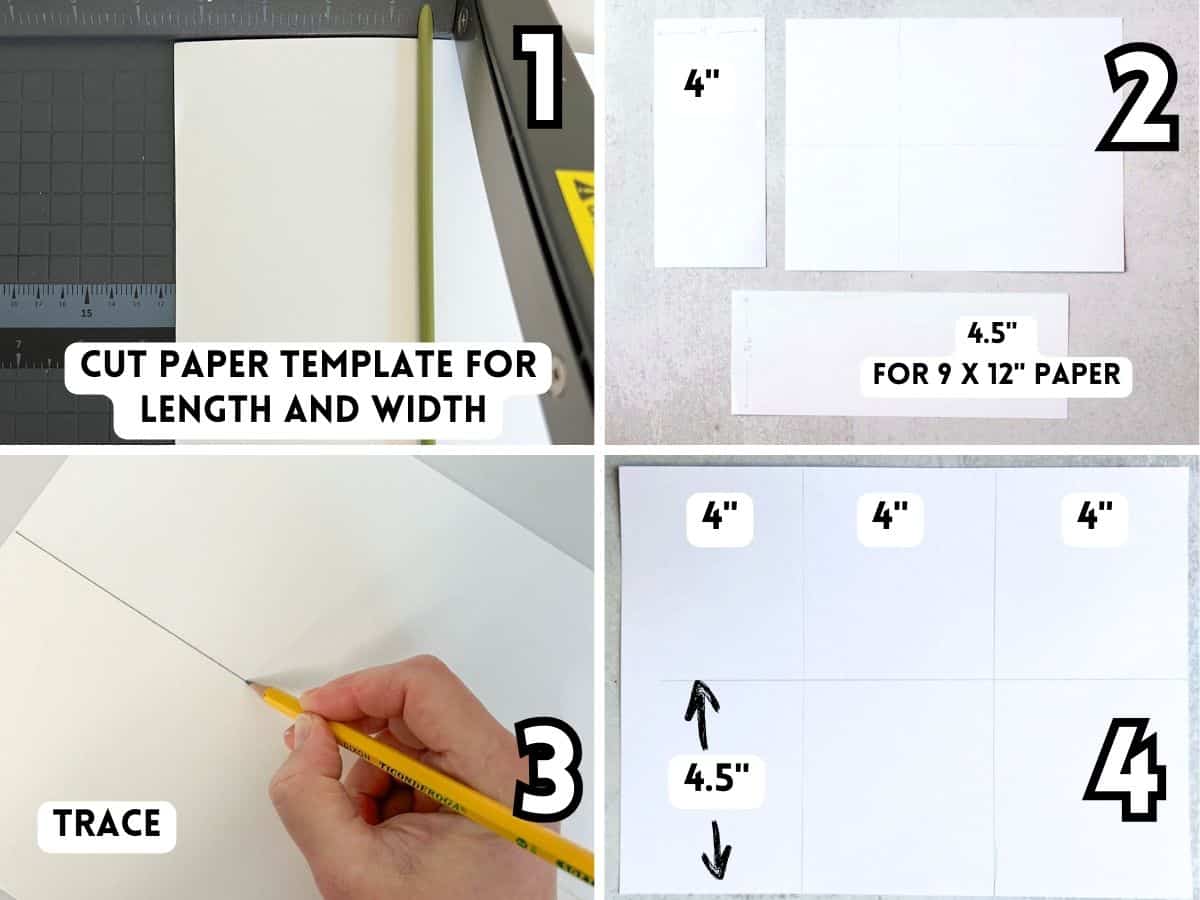
You can also show children how to complete this as well.
Making Concentric Circle Art Projects
Step 1: Draw Large Shapes In All 6 Boxes
Use an oil pastel to draw your first circle or large shape inside the first box. Switch colors or use the same color to draw a large circle in the 5 other boxes.
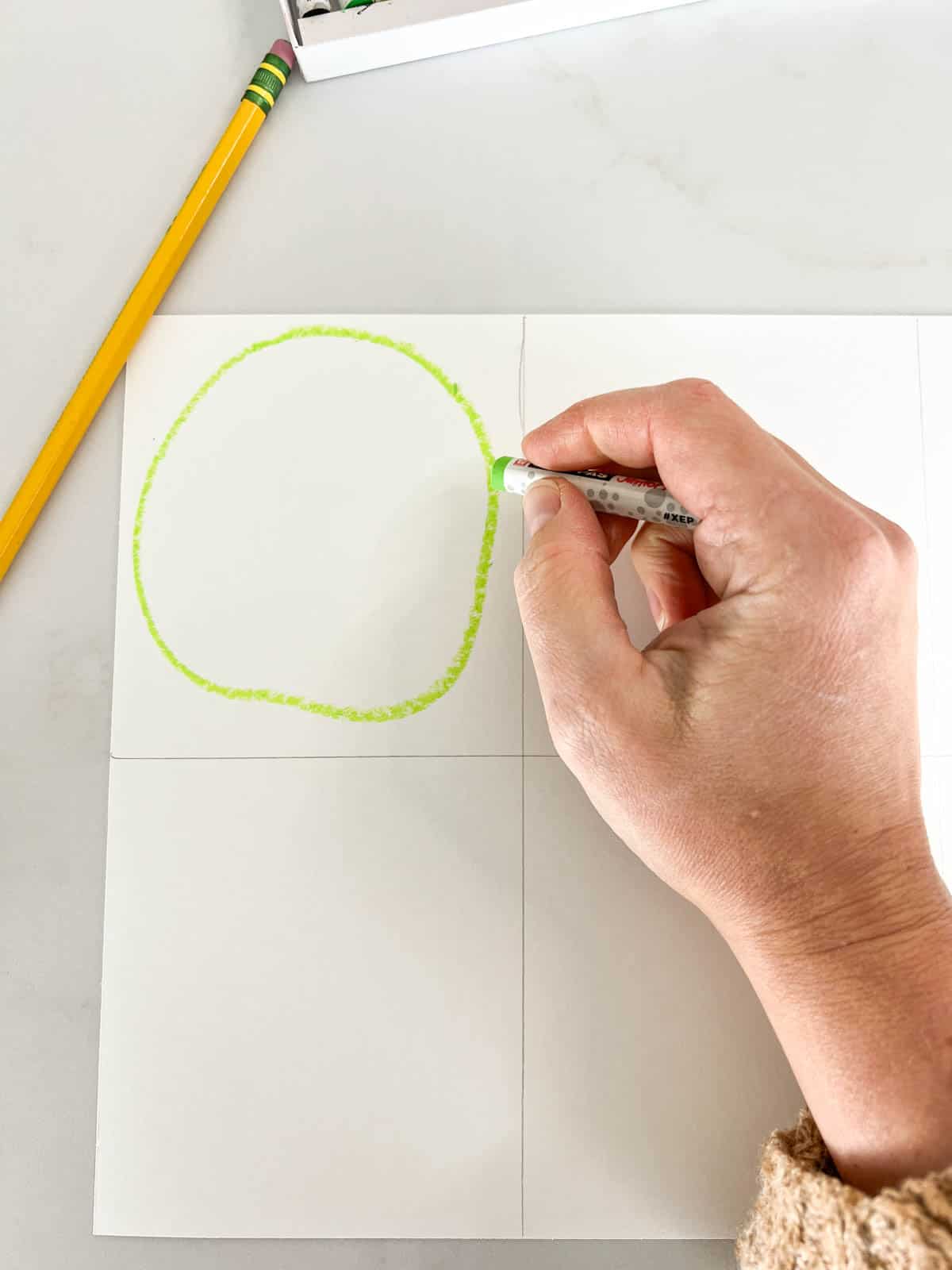
Step 2: Add Concentric Shapes Inside
Challenge children to see how many shapes they can get inside of each shape. Encourage them to change colors and take their time.

Optional Step: Color Some Of The Rings
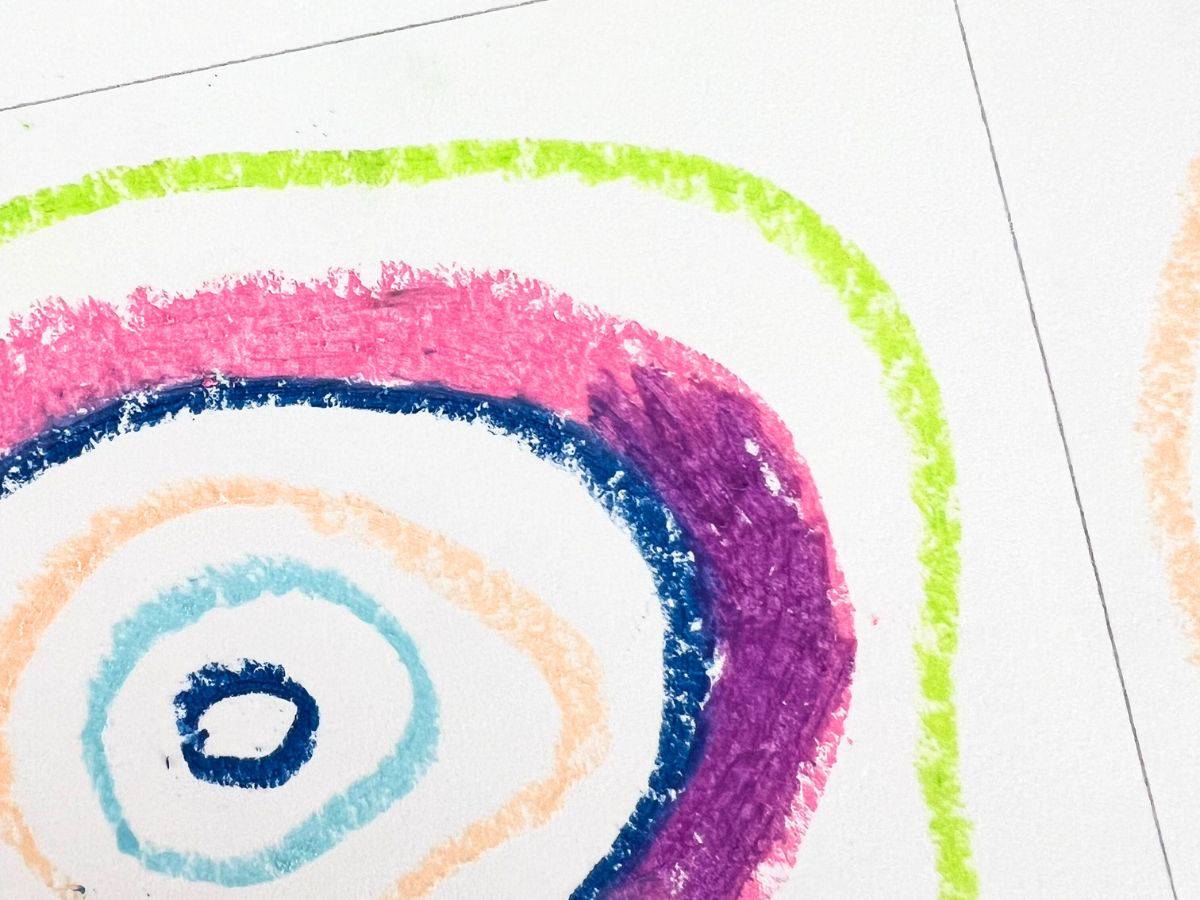
Color some of the concentric circles. Kids can blend different colors or color each ring the same color. You do not want them to color all the rings and background shapes.
Step 4: Use Watercolor or Watered Down Tempera Paint
Add watercolor paint or paint with watered-down tempera cakes to the areas that were not colored with oil pastels or crayons.

Step 5: Let Dry
We love going on a gallery walk to see all the amazing projects inspired by Kandinsky’s work.
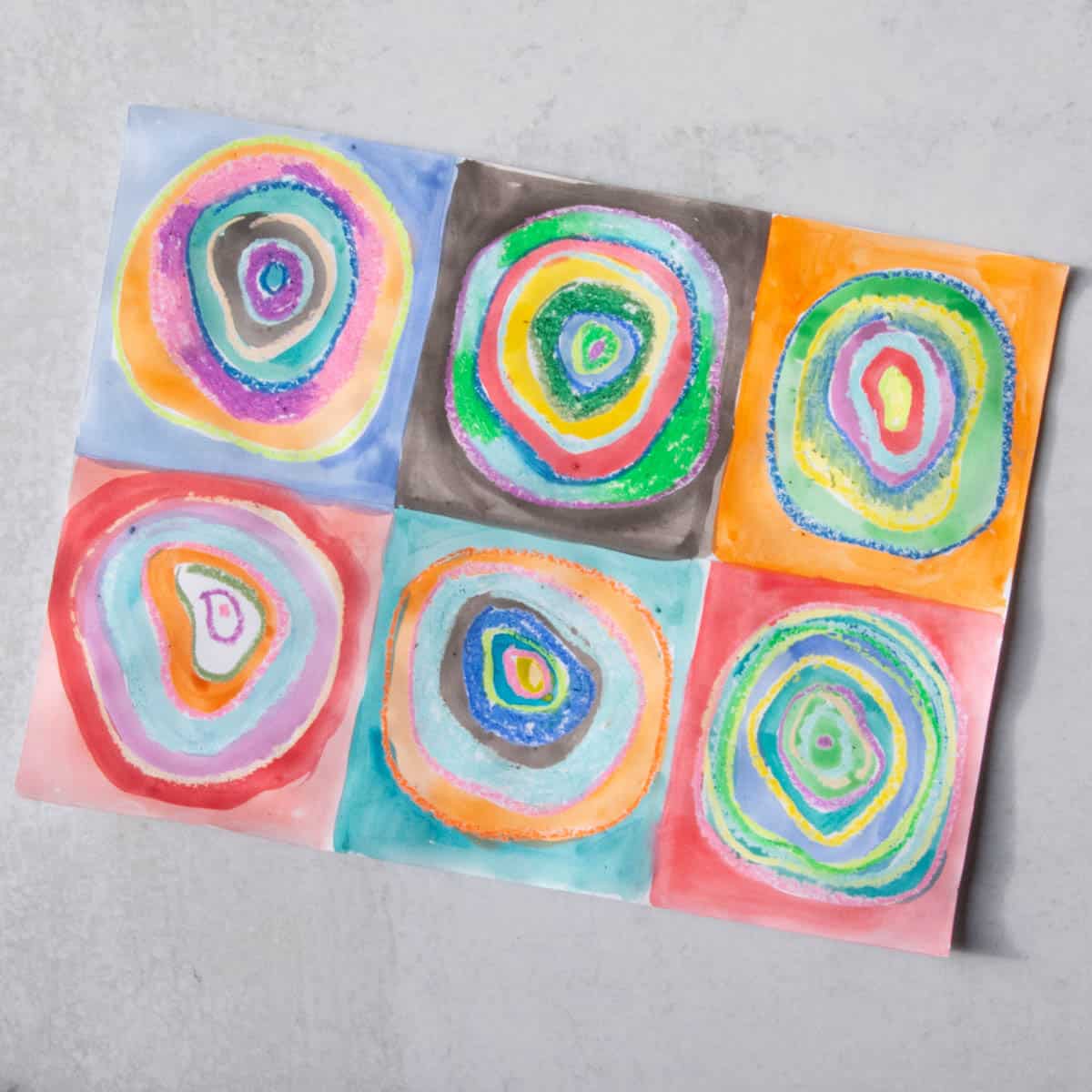
Tips
- Encourage children to think about contrast and balance when painting their abstract art.
- Tempera cakes are a little easier for young children to work with.
- You can paint to music like Wassily Kandinsky did when he created his artwork.
- You can add color wheel vocabulary or theory when teaching this very simple lesson. Consider making one concentric circle with secondary colors, primary colors, cool or warm colors or complementary colors, etc.

More Art Lesson Plans Inspired By Famous Artists
These are a few great lesson ideas for Art History Month or to add to your homeschool curricula.
- Jackson Pollock Inspired Action Painting For Kids
- Monet Waterlily Art Lesson Idea
- Primary Color Collages Inspired By Mondrian
- Heather Galler Inspired Folk Art
We just love it when you can be inspired by famous artists, but add your own style and twist to the project.
Easy Concentric Circles Art Project
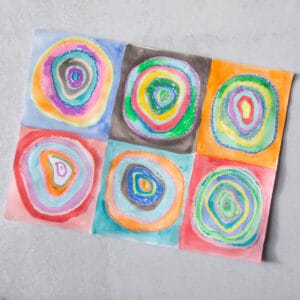
Equipment
- Water container
Supplies
- White Paper Heavy Drawing Paper, Watercolor Paper or Tagboard will work
- Tempera Cakes
- Oil Pastels
Instructions
- Divide paper into six squares. You can fold the paper, measure or create a guide to help you sketch the lines with a pencil.
- Use any colored oil pastels to draw 6 larges circular shapes inside the squares.
- Continue working with oil pastels to create as many rings inside of each other.
- Add paint to the white areas. You can brush right over where you put oil pastels.
Notes
- You can do this technique with any colors or subject matter. Have fun and experiment with this process!
- Children can color some of the rings or all of them if you do not want to paint.
- For children, rubber cement, painter’s tape, Glue-All, crayons, and oil pastels can all be used to resist the paint from sticking to the surface of your paper.

